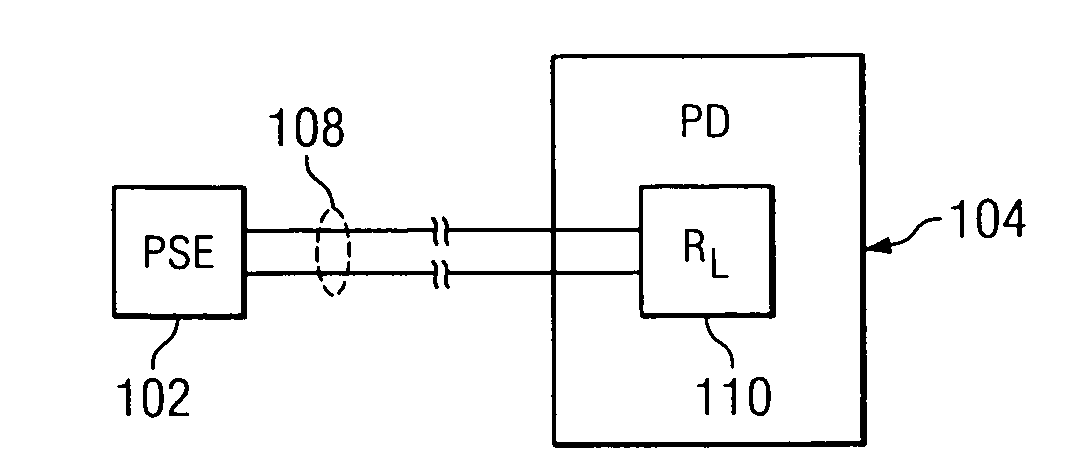System and method for characterizing a load at the end of a cable
- Summary
- Abstract
- Description
- Claims
- Application Information
AI Technical Summary
Benefits of technology
Problems solved by technology
Method used
Image
Examples
Embodiment Construction
[0025]A system and method in accordance with the present invention are disclosed for determining within a PSE whether a load within a PD that is coupled to the PSE via a communications cable is within a predetermined acceptable range of resistance. A system 100 operative in accordance with the present invention is generally illustrated in FIG. 1. Referring to FIG. 1 the system 100 includes a PSE 102 coupled to a PD 104 via a communication cable 108. The PSE 102 provides power to the PD 104 over the cable 108. Prior to applying power to the cable 108, the PSE 102 performs a test to determine if the resistance of a load RL 110 coupled to the cable 108 (either directly or via series connected diodes) is within an acceptable range of resistances. For example, in accordance with the Power Over Ethernet (PoE) standard IEEE 802.3af dated April 2004, which is incorporated herein by reference, the load RL 110 is deemed to be acceptable if within a range between 17,000 ohms and 29,000 ohms. I...
PUM
 Login to View More
Login to View More Abstract
Description
Claims
Application Information
 Login to View More
Login to View More - R&D
- Intellectual Property
- Life Sciences
- Materials
- Tech Scout
- Unparalleled Data Quality
- Higher Quality Content
- 60% Fewer Hallucinations
Browse by: Latest US Patents, China's latest patents, Technical Efficacy Thesaurus, Application Domain, Technology Topic, Popular Technical Reports.
© 2025 PatSnap. All rights reserved.Legal|Privacy policy|Modern Slavery Act Transparency Statement|Sitemap|About US| Contact US: help@patsnap.com



